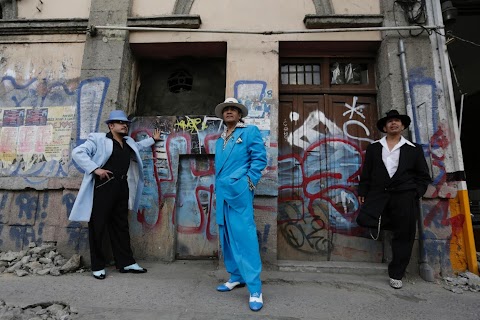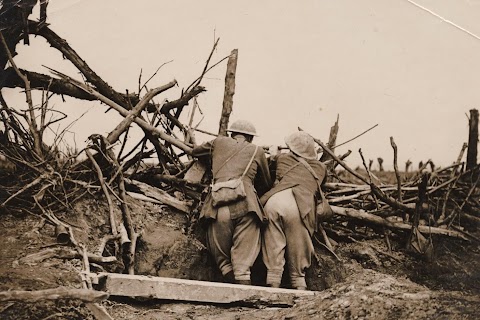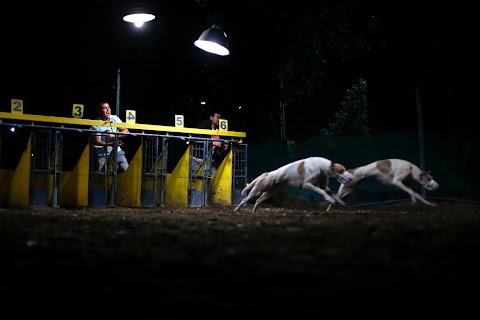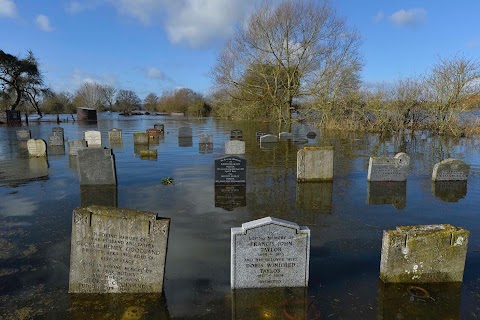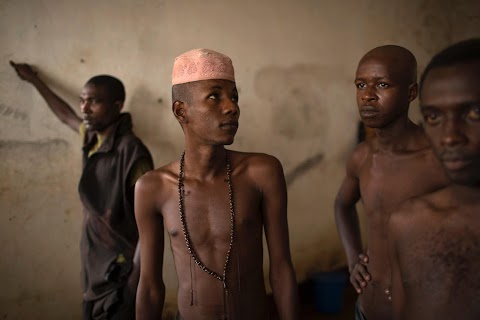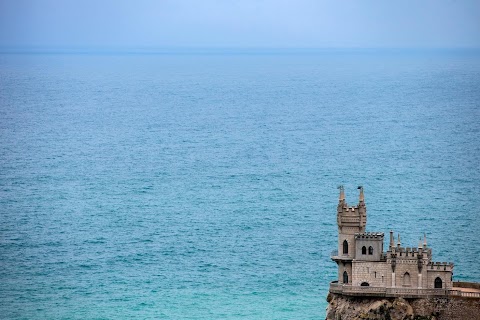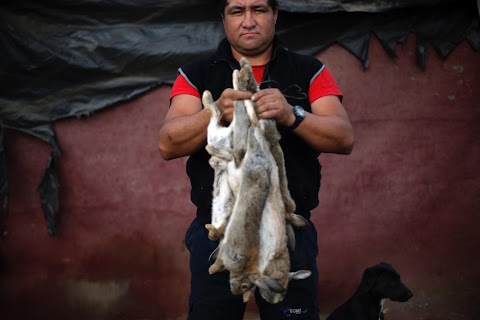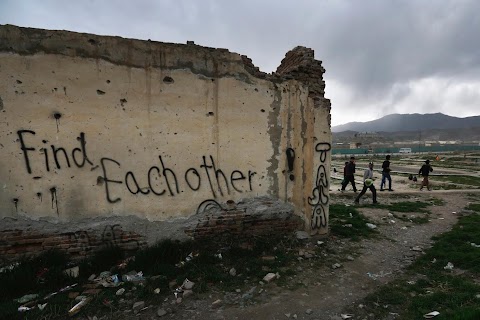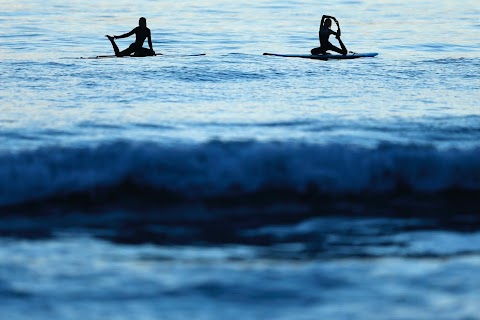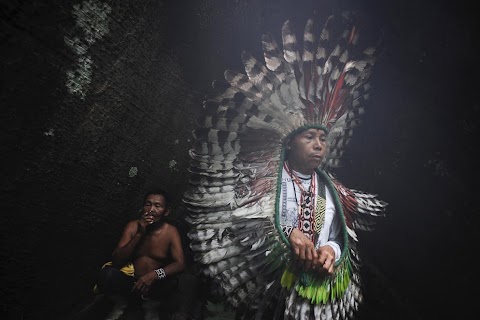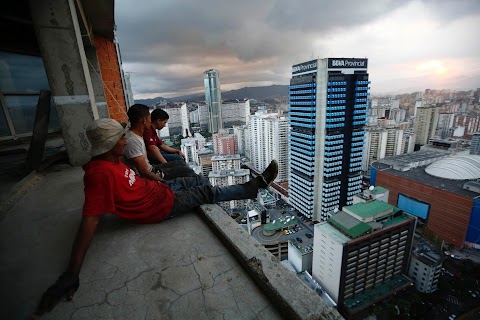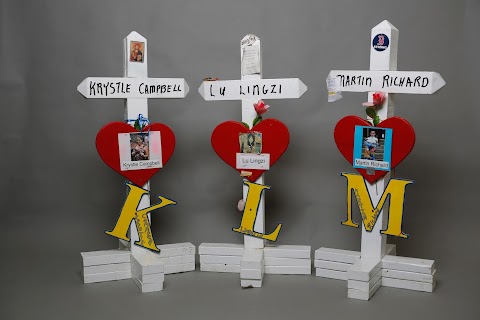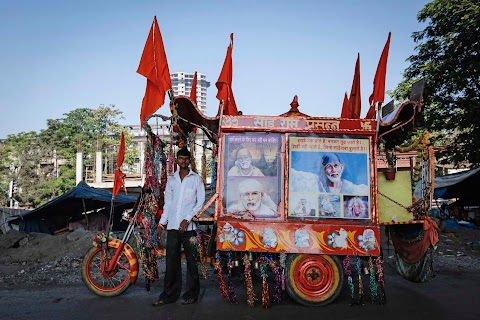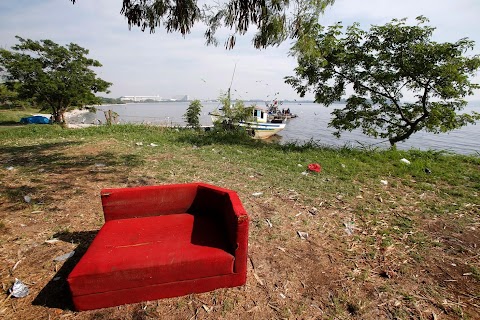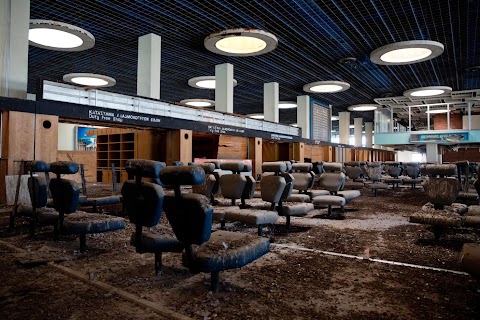
Lost in time - the Cyprus buffer zone
Greek and Turkish Cypriots have lived estranged for decades, and their island has been divided in two ever since a Greek Cypriot coup was followed by a Turkish invasion of the north in 1974.
Four decades on, a United Nations-controlled buffer zone splits Cyprus east to west. The zone still contains crumbling relics of times gone by - abandoned houses, businesses and even an airport.

Cyprus, a former British colony, gained independence in 1960 and initially Greek and Turkish Cypriots shared power.
It did not last. A political dispute caused Turkish Cypriots to leave the administration and violence erupted in December 1963, prompting the dispatch of U.N. peacekeepers to the island six months later.
Turkish Cypriots withdrew into enclaves, effectively partitioning the capital Nicosia.

The whole island was divided in two in 1974, when Turkish troops invaded and seized the northern third of Cyrpus in response to a coup by militant Greek Cypriots seeking union with Greece.
A U.N.-controlled buffer zone now runs across the country, dividing the Turkish Cypriot north and the Greek Cypriot south.
Although it is possible to cross the boundary through a number of checkpoints, entry to the U.N. zone itself is highly restricted. Many of the things inside - cars, houses, businesses - have been left to gather dust.

One of the most striking symbols of the buffer zone is the abandoned Nicosia International Airport, where a Cyprus Airways passenger plane still stands, faded and broken.
Its engines were stripped during the crisis in 1974 to enable another plane to be repaired, according to the U.N. Peacekeeping Force.

Some civilians do, however, live inside the buffer zone. Pyla is one of just a few villages in the restricted area and it has a mixed population of Greek and Turkish Cypriots.
It also has both a Greek Cypriot mayor and a Turkish Cypriot deputy mayor, pictured above. Both men are optimistic that Cyprus could be reunited.
“We need to shake hands and look to the future,” said Nejdet Enver, the Turkish Cypriot (right).
Slideshow

A mural of the Greek and Cypriot national flags is seen in the Greek Cypriot-controlled area of central Nicosia.

A sign marking the boundary of the U.N. buffer zone stands in the village of Pyla.

Houses stand crumbling in the buffer zone in central Nicosia.

Children play in a park in the Turkish Cypriot-controlled part of the capital.

A former residential property stands abandoned in the buffer zone.

A firing position, protected by sandbags, is seen in a house in the buffer zone.

Debris litters the kitchen of an abandoned cafe.

Empty bottles stand in the former cafe.

Old televisions, found and collected by soldiers, stand stacked in an abandoned commercial area.

Photographic slides collected by soldiers lie covered in dust.

Other objects found by soldiers lie in the abandoned commercial area.

A warning sign is seen on the buffer-zone wall, in the Turkish Cypriot side of Nicosia.

The Ledra Street border crossing is seen from the Greek Cypriot-controlled area of central Nicosia.

Nicosia International Airport stands abandoned.

A former passport office inside is faded and broken.

An advertising billboard is seen in the old airport.

A derelict Cyprus Airways passenger jet stands outside.

Cars from 1974 sit abandoned in an underground garage.

The milometer of one of the abandoned vehicles shows 32.9 miles on the clock.
"Overgrown houses and shops stand slowly crumbling along the winding route and there is hardly a sound to be heard."
If you look at a map of Cyprus, there is a line that cuts across the island like a scar. This is the buffer zone, a United Nations-controlled no-man’s land, also called the ‘Green Line’. It is a constant reminder that the country remains physically and symbolically divided.
The zone is a product of Cyprus’ turbulent history. When the island became independent from Britain in 1960, tension simmered between Greek and Turkish Cypriot communities, boiling over into political disputes and violence in 1963. Soon the first peacekeeping troops were sent in and the capital was effectively partitioned.
The situation escalated in 1974 when the Cyprus National Guard, who favoured union with Greece, staged a coup and Turkey responded with military action. The island was left split in two along the ceasefire line – and it remains so today.
The buffer zone is some 180 km (110 miles) long, and is controlled by United Nations peacekeepers. According to this U.N. force, the Green Line is almost seven and a half kilometers across at its widest point, and takes up about three percent of the island.
The buffer zone is most visible in Nicosia, where it is common to see streets blocked off by concrete walls, barrels and barbed wire. Outside of built-up areas the Green Line seems more symbolic. It is monitored by checkpoints and watchtowers, but is not marked by a great wall or fence. Occasionally roads will be blocked off and abandoned towns dot the route. But the area feels more like a wildlife preserve than a zone where troops operate.
It can be a frustrating place to work as a photographer. Photography is not allowed in or along the Green Line, and I had to get special permission and be accompanied by a U.N. observer to enter. On a number of occasions, police and soldiers told me to move on, and I was stopped and questioned by a U.N. patrol.
There are checkpoints allowing movement between the north and south of the island if you show your passport and both Greek and Turkish Cypriots are able to cross.
This doesn’t mean that things are easy. One Greek Cypriot confessed to me that he did not always tell his relatives, particularly the older ones, when he went into the Turkish Cypriot-controlled side of the city as they would disapprove. Many of the older generation still bear strong grudges and refuse to cross the divide.
The buffer zone in Old Nicosia is a surreal oasis of calm. Overgrown houses and shops stand slowly crumbling along the winding route and there is hardly a sound to be heard.
A common description of the buffer zone is that it is “frozen in time.” However, to me it was not so much a forgotten city as a testimony to conflict. Many of the houses bear the scars of war: bullet holes, sandbag fortifications and firing positions hint at the conflict that took place.
Many of the shop signs still remain and some buildings give the impression that the owners will be back in five minutes. In a former cafe, bottles, pots and pans seem hardly touched.
Some of the most famous residents in the Green Line are imported Toyotas stored in an underground garage. They were brought to the island from Japan but fighting broke out before they were sold. Dusty and rusting, some still have their import stickers and just 32 miles on the clock.
Similarly, further out of the city, the old Nicosia International Airport looks more like a scene from a post-apocalyptic horror film than a travel terminal. A Cyprus Airways passenger plane still stands outside, never to fly again. According to the U.N. peacekeeping force, its engines were stripped in 1974 to enable another plane to fly.
However, there are glimmers of hope that the island could one day be reconciled. The village of Pyla actually lies in the buffer zone and its residents are a mix of Greek and Turkish Cypriots. The small village still shows signs of division, though, with separate schools and a Greek Cypriot cafe facing a Turkish Cypriot cafe on the town square.
The village has a Greek Cypriot Mayor and a Turkish Cypriot deputy Mayor, who carry out their jobs in the U.N.-controlled zone. Both are keen to demonstrate that Pyla could be a model for the rest of the island.
Simos Mytides, the Greek Cypriot Mayor argued: “It is very easy for Cyprus to reunite. See how Pyla has been for 40 years. No serious problems and the communities live in peace. They play cards and backgammon together and go to each other’s weddings.”
He admitted, however, that there were some tensions in the community, partly caused by economic crises in Cyprus and Greece.
In spite of these problems, Nejdet Enver, the Turkish Cypriot Muhtar (mayor) remains hopeful for the island: “We have to trust the next generation to live in peace,” he said.

The flag of the self-declared Turkish Republic of Northern Cyprus (recognised only by Turkey) is seen overlooking Nicosia.

